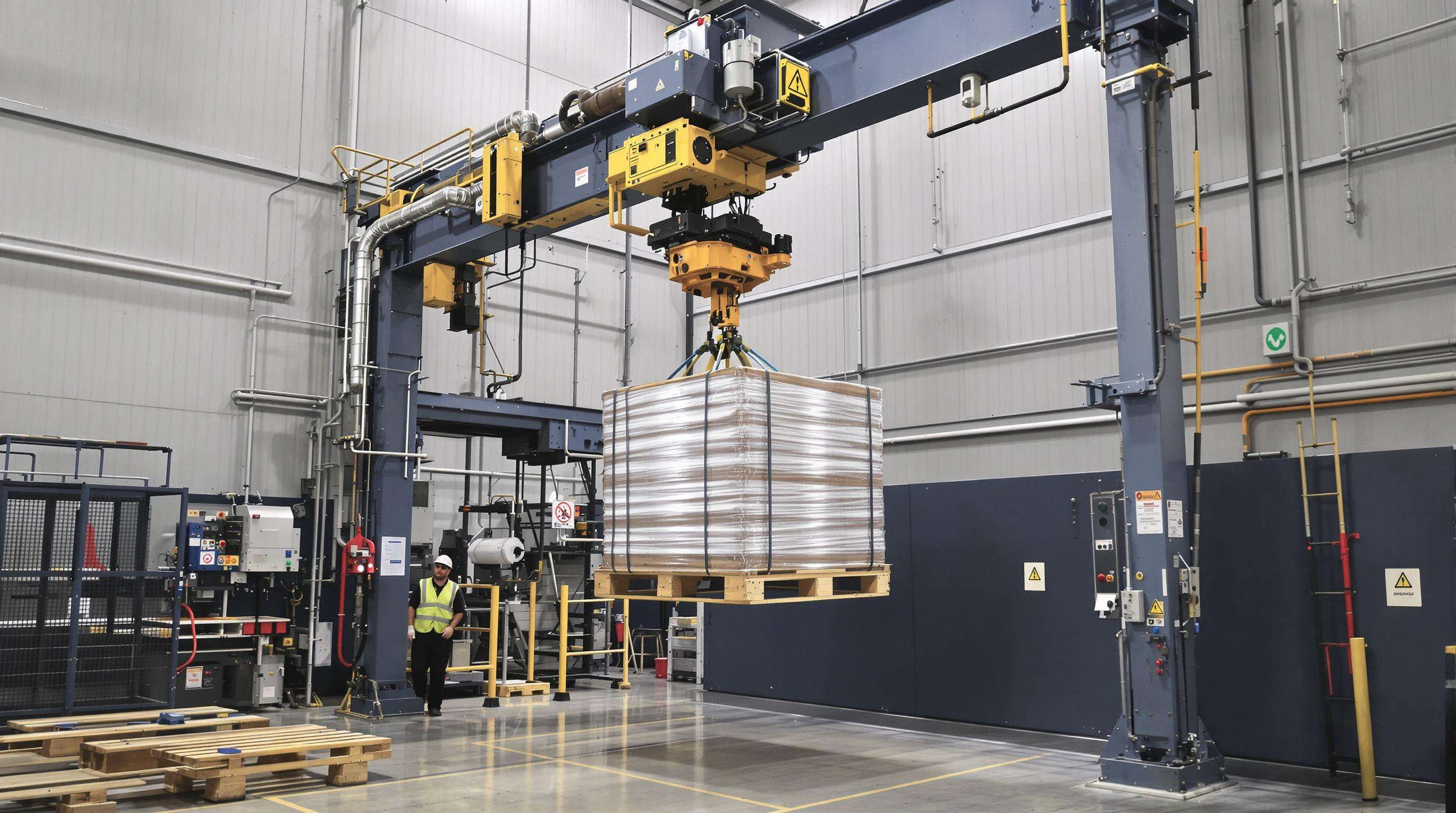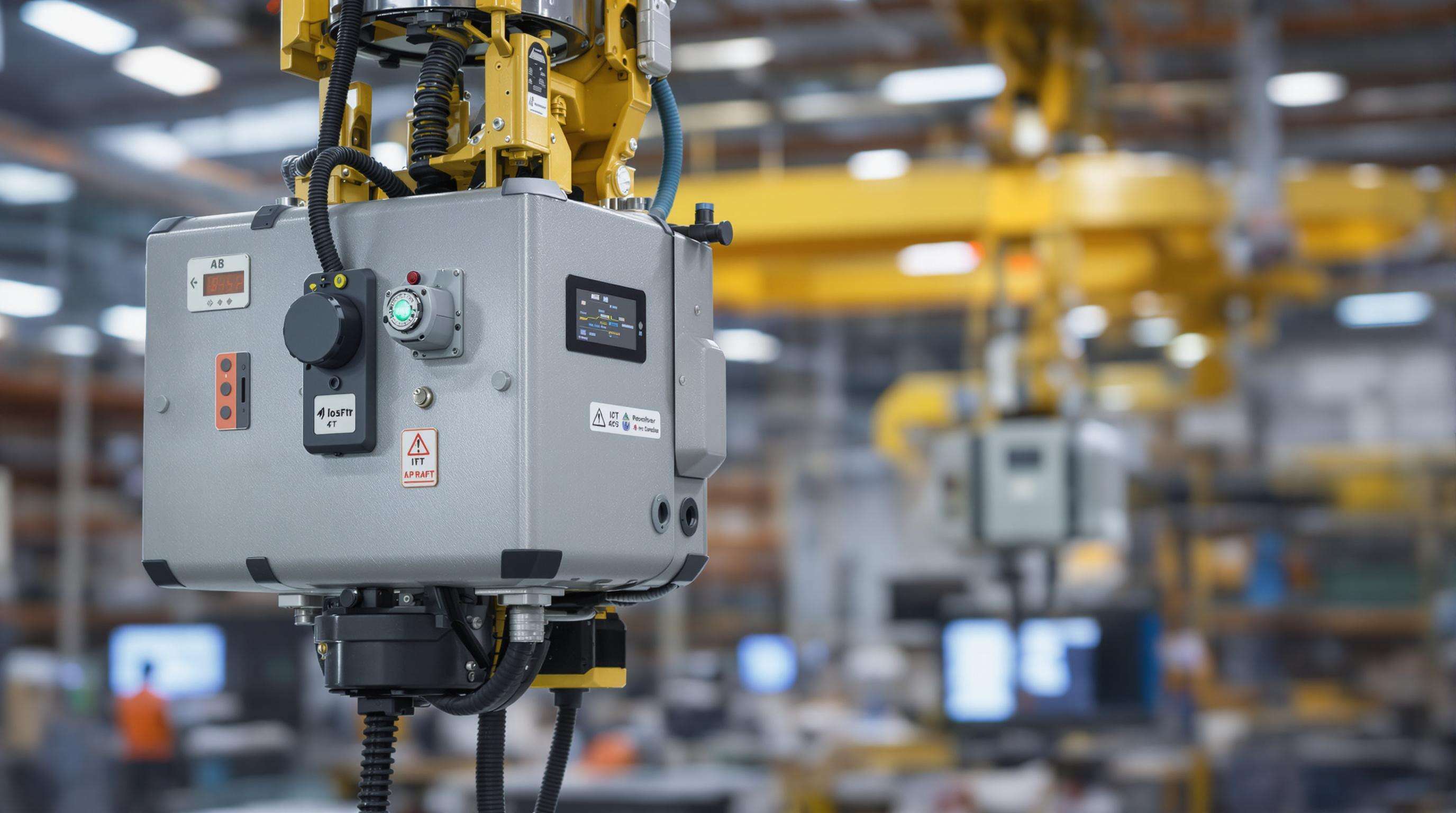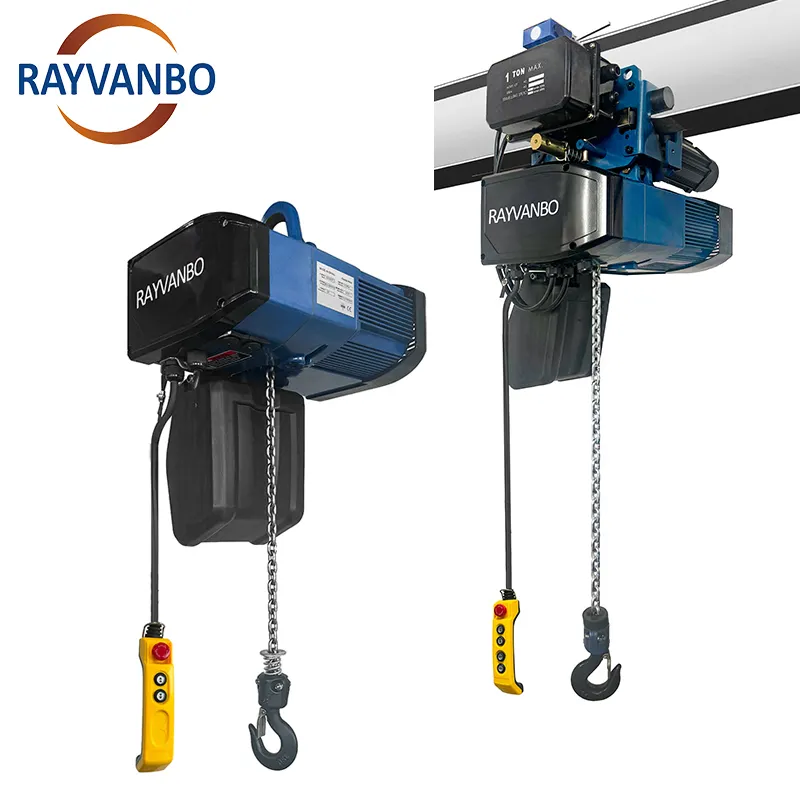Электрических цепных подъемников как усилители безопасности на складах

Защита от перегрузки: предотвращение катастрофических поломок
Электрическая цепная таль оснащена точным датчиком нагрузки, который остановит систему при перегрузке свыше 110% от ее грузоподъемности. Такой механизм безопасности предотвратит как значительные деформации несущей балки, так и поломку цепи, которые стали причиной 38% несчастных случаев, связанных с погрузочно-разгрузочными работами, по данным складских проверок безопасности 2023 года (Отчет NSHC, 2023). Современные модели оснащены двойной тормозной системой — механической и электромагнитной — которая останавливает инерцию перегрузки в течение 0,8 секунды, что намного быстрее, чем у традиционных пневматических талей.
Аварийные стоп-механизмы: контроль опасностей в реальном времени
Современные лебедки оснащены кнопками аварийной остановки, расположенными на расстоянии не более 15 дюймов от рабочих мест операторов, что соответствует стандарту ANSI/ASSE Z359.18-2023 по доступности. Активация кнопки отключает подачу электроэнергии и включает фиксирующие механизмы, предотвращающие неконтролируемое опускание груза. Предприятия, использующие системы мониторинга нагрузки с поддержкой IoT, сообщают о сокращении времени реагирования на опасности на 67% по сравнению с ручным контролем.
Эргономичный дизайн, минимизирующий производственные травмы
Антивибрационные рукоятки и регулируемые пульты управления снижают риск травм от повторяющихся нагрузок, что способствовало сокращению на 29% случаев мышечно-скелетных расстройств у операторов (испытания 2024 года). Конструкция крюков с низким профилем уменьшает необходимость поднимать руки высоко над головой, а светодиодные индикаторы повышают пространственную осведомленность при выполнении точных операций.
Исследование случая: снижение аварий на 43% на складе автозапчастей
14-месячное исследование на автомобильном распределительном центре площадью 120 000 кв. футов показало, что переход на электрические тали сократил количество ударных столкновений на 43%. Журналы инцидентов подтвердили полное устранение аварий, связанных с перегрузкой, а аудиты безопасности отметили эффективность двойных тормозных систем в предотвращении раскачивания груза.
Революция в операционной эффективности благодаря электрическим талям
Техники оптимизации автоматизированного потока материалов
Электрические тали синхронизируют операции подъема с конвейерными системами и базами данных инвентаря, снижая необходимость ручного принятия решений на 73% (Отчет по промышленной автоматизации, 2024). Интеграция с программным обеспечением управления складом обеспечивает бесперебойный поток материалов.
на 35% быстрее циклирования грузов по сравнению с ручной обработкой
Электрические тали обеспечивают время цикла 90–120 секунд на поддон — на 35% быстрее, чем при ручной обработке. Программируемые траектории подъема исключают ненужные колебания, а автоматизированные системы поддерживают постоянную скорость независимо от веса груза.
Энергоэффективные двигатели, снижающие эксплуатационные расходы
Системы рекуперативного привода восстанавливают 18% затраченной энергии во время операций опускания, возвращая её в электрические сети объекта. В сочетании с оптимизированными циклами работы через интернет вещей (IoT), склады сообщают о снижении затрат на электроэнергию на 22% по сравнению с традиционными моделями.
Анализ пропускной способности: рост производительности на 28%
Оценка за 12 месяцев на шести складах показала, что использование электрических талей позволяет операторам выполнять 142 подъема в день на человека против 111 с ручными цепными талями. Рост эффективности достигается за счет исключения ручной установки цепи, автоматической калибровки высоты и параллельных операций подъема/опускания.
Проектирование современных талей с акцентом на соответствие нормам
OSHA 1926.554: Ключевые требования к талям
Современные тали соответствуют требованиям OSHA:
- Ежегодное испытание нагрузкой на 125% от номинальной грузоподъемности
- Двойные тормозные системы для контроля вертикального перемещения
- Автоматическое обнаружение провисания цепи
Анализ регуляторных требований за 2024 год показывает, что соблюдение этих правил предотвращает 78% инцидентов, связанных с подъемными операциями.
Функции отслеживания технического обслуживания, соответствующие аудиту
Функция цифровых журналов технического обслуживания:
- Шифрованные временные метки
- Автоматические напоминания о смазке
- Географические метки для операций на нескольких площадках
Предприятия, использующие эти инструменты, устранили на 63% больше замечаний по соблюдению требований OSHA до аудита.
Управление документацией по сертификации
Облачные платформы централизуют записи инспекторов, видео с испытаний под нагрузкой и историю оборудования. Автоматические уведомления об истечении срока действия помогают избежать предписаний, связанных с неполной документацией.
Технологическая эволюция в области электрических талей

Системы контроля нагрузки с поддержкой IoT
Встроенные датчики IoT в реальном времени отслеживают вес груза, баланс и напряжение, останавливая небезопасные операции. Склады, использующие эти системы, сократили инциденты, связанные с грузами, на 40%.
Алгоритмы предсказательного обслуживания
Анализ на основе ИИ предсказывает износ компонентов с точностью 92%, планируя техническое обслуживание до возникновения сбоев. Это снижает незапланированное время простоя на 35% и продлевает срок службы подъемника на 19 месяцев.
Система контроля раскачивания для точного позиционирования
Продвинутые системы контроля раскачивания позиционируют грузы весом 2 тонны с точностью в пределах 3 мм — это на 70% лучше традиционных методов — и снижают риск столкновений на 52% в загруженных зонах.
Тренды интеграции беспроводного управления
Пульты дистанционного управления с радиочастотой обеспечивают дальность действия до 150 метров с зашифрованными сигналами, исключая использование кабельных пультов. Платформы на основе облака позволяют централизованно управлять процессами, улучшая время цикла на 28%.
Эргономика и инновации в области безопасности, ориентированной на оператора
Снижение заболеваний опорно-двигательного аппарата: 12-месячное исследование
Эргономичные подъемники снизили уровень заболеваний опорно-двигательного аппарата на 72% на складах. Регулируемые пульты управления и мониторинг позы с помощью ИИ решают основные причины травм.
Требования к сертификации для безопасной эксплуатации
Обязательные программы обучения делают упор на правильную позиционирование, биомеханику тела и распознавание усталости. В сертифицированных учреждениях количество производственных травм снизилось на 34%.
Технологии снижения фонового шума
Подъемники с уровнем шума ниже 75 дБ уменьшают когнитивное утомление, соответствуют стандартам OSHA и снижают количество инцидентов, связанных с коммуникацией, на 19%.
Раздел часто задаваемых вопросов
В чем преимущество использования электрических цепных талей по сравнению с традиционными пневматическими талями?
Электрические цепные тали обеспечивают более быструю защиту от перегрузки и улучшенные функции безопасности, такие как двойные тормозные системы и системы аварийной остановки, которые повышают контроль при эксплуатации.
Как электрические тали способствуют обеспечению безопасности на рабочем месте?
Они включают в себя такие особенности, как эргономичный дизайн, контроль раскачивания и системы мониторинга нагрузки с поддержкой IoT, которые снижают уровень аварийности и улучшают время реагирования на опасности.
Какие требования соблюдения нормативов при использовании электрических талей?
Требования соответствия включают ежегодное испытание на нагрузку, двойные тормозные системы, автоматическое обнаружение провисания цепи и отслеживание технического обслуживания с возможностью аудита, соблюдая стандарты безопасности, такие как OSHA 1926.554.
Как электрические тали повышают эффективность операций?
Электрические тали упрощают поток материалов, сокращают время цикла нагрузки и используют энергоэффективные двигатели, что приводит к повышению производительности и снижению эксплуатационных расходов.
Содержание
- Электрических цепных подъемников как усилители безопасности на складах
- Революция в операционной эффективности благодаря электрическим талям
- Проектирование современных талей с акцентом на соответствие нормам
- Технологическая эволюция в области электрических талей
- Эргономика и инновации в области безопасности, ориентированной на оператора
-
Раздел часто задаваемых вопросов
- В чем преимущество использования электрических цепных талей по сравнению с традиционными пневматическими талями?
- Как электрические тали способствуют обеспечению безопасности на рабочем месте?
- Какие требования соблюдения нормативов при использовании электрических талей?
- Как электрические тали повышают эффективность операций?

